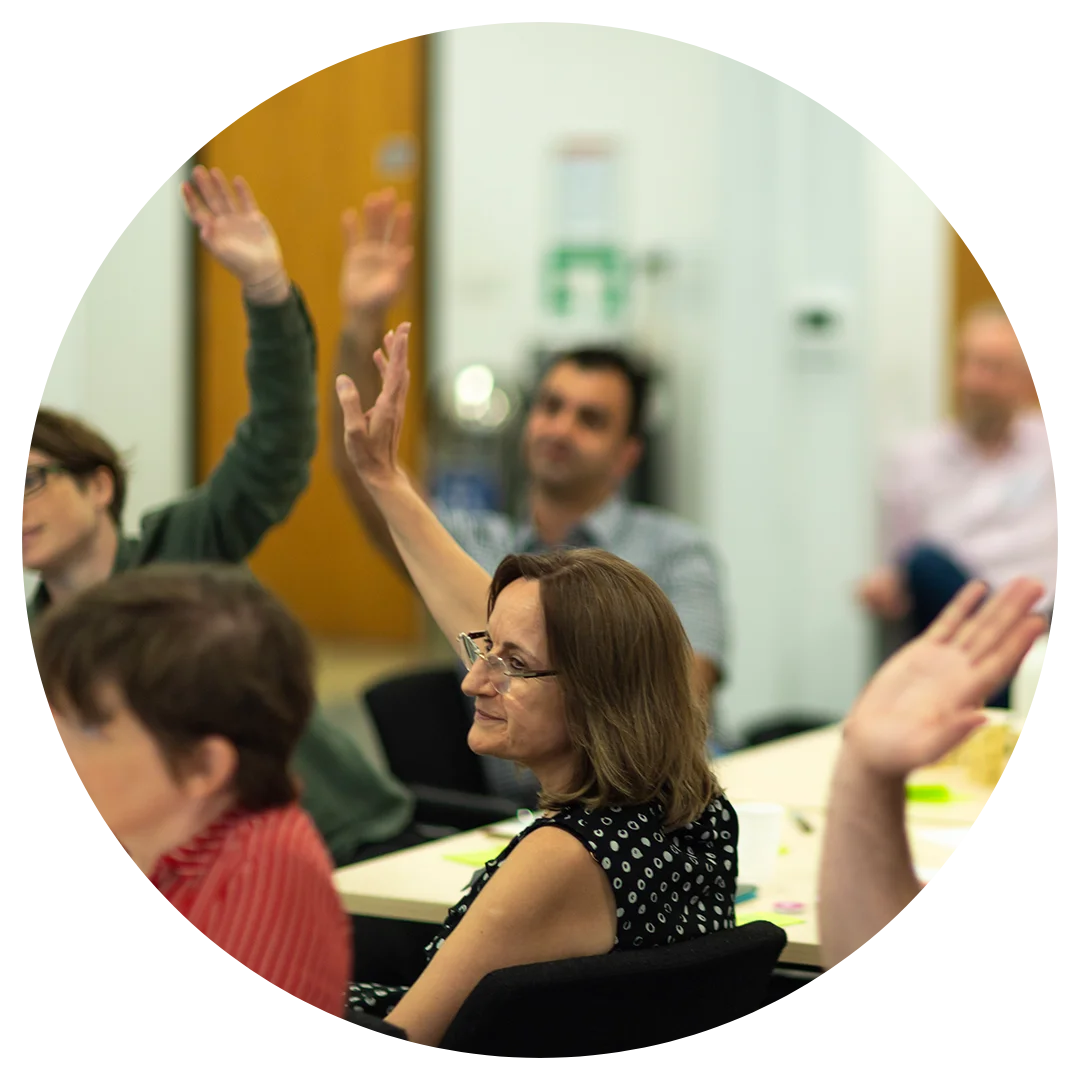LOTI’s view of London as a Smart City
In this blog, Jay Saggar and Eddie Copeland share their thoughts on London as a smart city and what LOTI aims to do in this area.
What’s a smart city?
First things first, what is a smart city? While interpretations vary, the term is mostly used when talking about the use of advanced, and particularly internet-of-things (IoT), technologies in public places. This includes areas like high streets and parks, but also publicly owned buildings, such as social housing. Common examples might include ‘internet-connected’ lamp posts that measure air pollution, moisture sensors that check for damp conditions in buildings, and smart river sensors that monitor and help predict when flooding may occur.
The London context
Use cases like these are clearly of interest to London as much as other cities. Yet when it comes to explaining what London is doing, the picture is a little complicated. In part, that’s because so many different organisations are involved. To a large degree, London isn’t one city but 33. The 32 boroughs and City of London each have differing levels of interest and maturity in smart city initiatives. The five boroughs of the South London Partnership have been particularly active as part of the InnOvaTe Project. Westminster has been leading the way on smart city approaches to cleaner air. At the GLA, the Connected London Team oversees London’s connectivity picture, supporting the role of full fibre broadband. Transport for London is world-renowned for its pioneering work on contactless payments enabling more seamless travel. Meanwhile SHIFT, based out of the former Olympic Park, and DG Cities, based in Greenwich, act as test beds for new technologies.
It’s not for LOTI to dictate what all these players do. However, we do have a firm interest in making sure that London’s various initiatives collectively benefit Londoners, that we can scale good practice, and that we make the right decisions now to ensure London makes the most of the opportunities smart cities present. With that in mind, we advocate the five principles, each of which we explore below.
1 – It’s all about outcomes
At LOTI, we’re outcomes-driven. Put simply: we’re interested in smart city tools and approaches to the extent that they can help deliver real-word improvements to the lives of Londoners. The good news is that smart city tools and approaches look well placed to play a useful role in tackling some of London’s big challenges. For example, as London adapts to more extreme weather, IoT technologies can help monitor urban temperatures at a hyper local level, or check river levels to help predict flooding. In housing, sensors can and are being used to monitor damp conditions – a point of acute attention following the tragic death of Awaab Ishak in 2020 due to mold. And in social care, connected devices – if used thoughtfully – can help some people live more independently while staying connected with their friends and loved ones.
Given this outcomes-focus, LOTI plays two roles. First, we work with London’s Environment, Housing and Social Care teams to ensure they’re aware of opportunities for smart city approaches to help deliver their goals. Second, we can help triage where a smart city approach is the right one. To achieve that, we use our Outcomes-Driven Methodology for Data Projects. This starts by identifying the real-world change we want to see, and then focuses on who could do something differently if they had access to better information. When we get to step of exploring what data is required, we encourage teams to first think about whether they can solve their problem using existing data sources, such as open data, council datasets, or data from corporates (e.g. using data from MasterCard and telcos to understand spending and movement patterns). If and only if those data sources can’t provide the required insights, we can then look to see if IoT technologies can fill the gap.

To give a tangible example, in the South London Partnership, they aim to predict and prevent flooding. To do that they can get rainfall data from the Met Office data, but they need a new data source to know which gullies are blocked. They therefore invested in sensors for those gully ways to provide the insights they need.
2 – Transparency and ethics are a must
Using technology and data responsibly is both the right thing to do and is also key to securing the support of residents, businesses, council colleagues and other partners. As a result, public engagement and transparency should be designed into the entire lifecycle of a smart city service. Publishing where, how and why smart technology is being used is a basic and easy to achieve first principle for transparency. Starting with clearly defined outcomes should make it easier to be transparent and clear when communicating ‘why’ the technology is being used.
A more holistic approach to ethics should take into account a broader engagement with residents to ensure that their views and expectations are take into consideration. Camden have engaged residents in the process developing a data charter that covers all aspects of the council use of data while Brent have set up an data ethics board that includes experts from the public and private sector alongside residents that provides scrutiny of council projects.
Ultimately smart city initiatives are likely to fail if they do not have the support of residents. Anyone hoping to use smart city methods owes it to both residents and to others running smart city projects to take an ethical approach. For example the use of privacy invasive technology such as facial recognition CCTV can have negative reputational impacts beyond the direct operator of the service. Smart city technology must meet the expectations of residents because it is the right thing to do and because without it the technology will likely fail to meet its outcome.
3 – We need to build the pan-London picture
The fact that London local government is so fragmented poses a number of challenges. First, the types of issues that smart city tools and approaches are apt to address, such as pollution, congestion and energy consumption, do not neatly confine themselves to borough boundaries. Without some coordination, there is a risk that each borough implements a completely different approach to these things, creating new data silos and preventing the creation of insights and services that could work across boundaries and benefit all Londoners. (Londoners will not thank us if we have 33 separate pollution maps!) That doesn’t mean every borough has to use the same smart city tech. Rather, LOTI’s role is to encourage boroughs to ensure data they collect locally can be shared, preferably via API and according to some common data standards, so we can join up and create the pan-London picture.
Collaborating across boroughs is also good for innovation, on at least two fronts. First by coordinating and sharing lessons from their various experiments, boroughs can reduce the time, cost and risk of trialing new smart city innovations. This way, all get to learn faster. Second, by implementing some common standards and principles, such as aggregating up non-personal data at a pan-London level, they can make London a more attractive place for innovative companies to trial their products, and enable a greater number of innovators to build useful products and services with their data. For reference, consider TfL’s Unified API, which has more than 600 apps and services built on top of it due to the fact that it has a pan-London reach. Boroughs will fail to attract that level of interest and investment if they go it alone.
4 – Smart cities must be secure by design
When deploying smart city systems we create a new and complex infrastructure that adversaries may seek to attack. Not only are parts of the councils’ network now situated in the street but the systems behind the technology are often operated by a complex supply chain. Managing and mitigating these risks takes careful planning and good contract management.
Guidance is available to support project planning and service operation from various central government departments including the National Cyber Security Centre (NCSC), Department for Science Innovation and Technology (DSIT) and the Centre for the Protection of National Infrastructure (CPNI). This covers risk management, procurement and understanding internet-connected infrastructure in a national security context. In addition to this local authorities should embed additional principles such as designing smart city services that avoid the collection of personal data.
5 – Let’s acknowledge that tech and data alone are rarely the whole solution.
Finally, LOTI has a role to play in helping boroughs avoid the mistakes we’ve seen in other areas of the digital transformation of local government movement. Namely, the misunderstanding that it’s all about the tech. Any new technology we deploy – and data we draw from it – will be impactful only to the extent they lead to action. We must therefore ensure that smart cities initiatives aren’t just about installing sensors, but challenging ourselves to adapt our ways of working, our decision making and service models. Returning to our earlier flooding example, in Sutton, the teams responsible for clearing gullies have changed their service model to clear drains based on risk, not on a chronological inspection pattern. This is why LOTI doesn’t just work with technology teams, but ensures service managers, policy leads and front line staff are all part of the conversation.
No city should feel pressured to implement new smart city tech for its own sake. It’s just another set of tools we can add into the mix when we aim to tackle urban challenges. Those tools need to be used with thought and care. If “smart city” is to mean anything at all, it’s about how smart we are in using all the tools and methods at our disposal to achieve outcomes that matter to Londoners.
Visit our Guide to Designing Smart City Projects for more details.
Jay Saggar
Eddie Copeland


